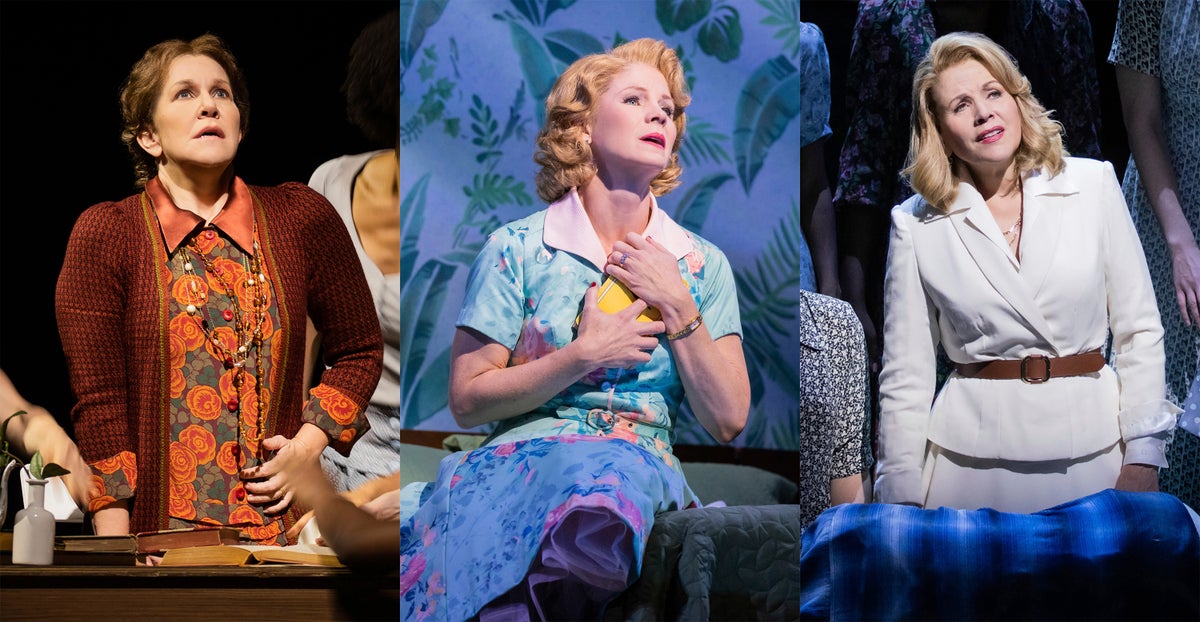
Kevin Puts’ “The Hours” has had more than a few hours of changes since it was first heard in a pair of concert performances in Philadelphia last March.
The first composition in a novel arrangement between the Philadelphia Orchestra and the Metropolitan Opera was presented twice last March at Verizon Hall, then fine-tuned by the production team before its staged debut in New York on Tuesday night.
“He made the role higher for me,” said soprano Renée Fleming, who sings Clarissa Vaughan. “I was nervous about the orchestration, and he also adjusted that.”
Based on Michael Cunningham’s Pulitzer Prize-winning 1998 novel, “The Hours” was adopted into a 2002 Academy Award-nominated film starring Meryl Streep, Julianne Moore and Nicole Kidman, who won the Oscar for best actress. The story details three generations of women connected by Virginia Woolf’s 1925 novel “Mrs. Dalloway.”
Puts’ version features the starry trio of Fleming, Joyce DiDonato and Kelli O’Hara, with Met and Philadelphia music director Yannick Nézet-Séguin conducting, Phelim McDermott supervising roughly 30 scene changes and choreographer Annie-B Parson making her Met debut. There are eight performances through Dec. 15, including a Dec. 10 matinee simulcast to movie theaters worldwide and available for streaming in areas not near auditoriums.
Fleming’s assistant, Paul Batsel, suggested the novel and Fleming pitched it to Met general manager Peter Gelb. Now 63, Fleming had not appeared at the Met since her final Marschallin in Strauss’ “Der Rosenkavalier” in 2017.
“I realized immediately that this was a way to get her back into the opera house,” Gelb said.
Fleming had sung Puts’ “Letters from Georgia” based on correspondence between Georgia O’Keeffe and Alfred Stieglitz, which premiered in 2016 and was expanded three years later into “The Brightness of Light.” She wanted to work again with Puts, whose “Silent Night” won the 2012 Pulitzer Prize for Music. He also created “The Manchurian Candidate” (2015) and “Elizabeth Cree” (2017), both praised for their music.
Puts, 50, composed “The Hours” through the pandemic at his home in Yonkers. Greg Pierce started writing the libretto in 2018 and Gelb brought in McDermott, familiar with Philip Glass’ score from the movie.
“It’s not linear. It’s more like you’re creating the whole atmosphere,” McDermott said. “The book is about what’s going on inside these people’s heads. The chorus is often the mind of the person on stage. So that has been the challenge of how to weave the chorus through and weave these stories together so that they rhyme with each other. The dancers are a physical expression of that, as well.”
DiDonato portrays Woolf in the Richmond area outside London in 1923; O’Hara is Laura Brown, an unhappily married housewife in 1949 Los Angeles; and Fleming is Vaughn, an editor arranging a party for Richard, an HIV-positive novelist friend in late 20th century New York.
“I don’t think I’ve ever experienced this feeling of anticipating an exact date for years and then having it be now a week before that date,” Puts said. “There’s something strange and kind of surreal about that here we are, now I’m at that moment, I feel a little out-of-body experience with it. But this is the nature of live performance with so many elements.”
Gelb was impressed by Parson's choreography of David Byrne’s “American Utopia” on Broadway and asked her to meet McDermott on what she called “a blind date.”
“I suggested to him that she might be somebody he could talk to and see if they could find a way of collaborating to use dancers as well as actors to manipulate the scene exchanges,” Gelb said. “It became a lot more than that.”
Parson took ideas from Tim Pye’s sets and was inspired by Virginia’s books, Clarissa’s flowers and Laura’s kitchen.
“When I originally saw the design ideas, I thought it would be beautiful to have the dancers animate the architecture to make it alive,” she said, adding she wanted to capture “the magic of the ’50s, which is really a scary moment because it’s like such a false god.”
After Philadelphia, Puts expanded orchestral music to give McDermott more staging time and cut the character of Cunningham, who had encountered Woolf in the opera.
“Everyone decided that was a little much,” Puts said.
During rehearsals, the cast and production team began each day sitting in a circle and sharing something important to each.
“My sort of take on all these stories is the kind of tragedy of being forced at some level or another to live an inauthentic life,” Puts said. “Laura Brown just feeling trapped in this existence and Virginia Woolf, this kind of superhuman creativity, force of nature, and kind of being confined to this little place where she was so miserable. And Clarissa also in her own way just sort of stuck on Richard in a way that she can’t escape.”
All involved expect the audience experience to be different than reading the book or watching the film.
“Opera is this radical form, which can do things that nothing else can do,” McDermott said. “It’s always weird to talk about something before you’ve opened it, but it’s definitely an attempt to use opera to do something and create something that’s never existed before.”



!["[T]he First and Fifth Amendments Require ICE to Provide Information About the Whereabouts of a Detained Person"](https://images.inkl.com/s3/publisher/cover/212/reason-cover.png?w=600)



